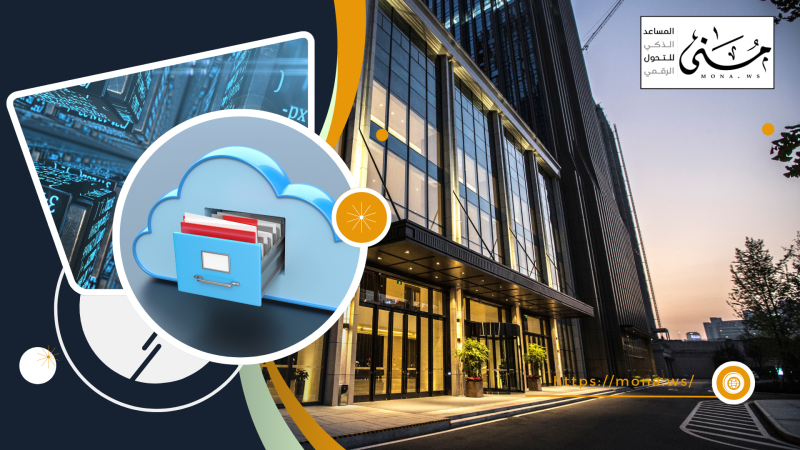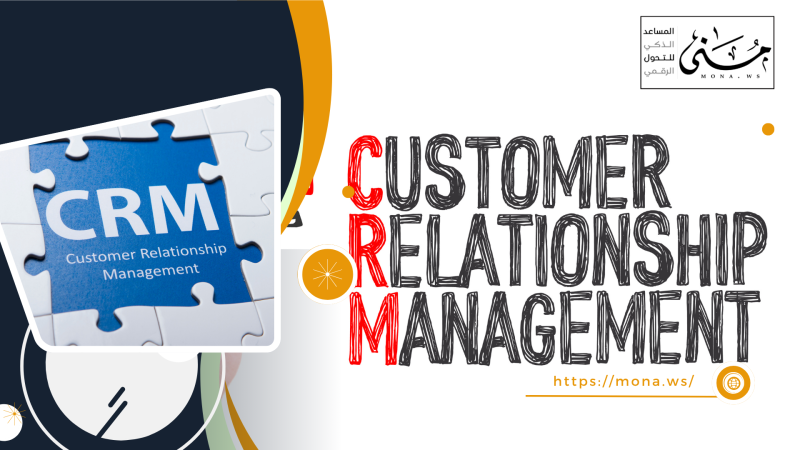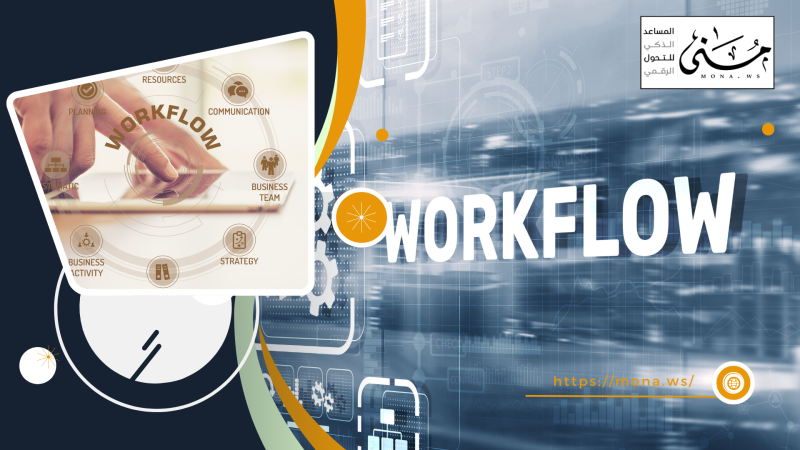At the heart of every vibrant medical institution, operations are not limited to diagnosis and treatment. They extend to a complex network of administrative communications and medical correspondence that forms the hospital's nervous system. From a simple test request to a complex consultation report, from a supplier's invoice to a multi-million dollar equipment purchase order, information flows incessantly. But what if this flow is slow, paper-based, and prone to loss and error? Herein lies the major problem that many hospitals have faced for decades: a deep gap separating administrative correspondence (incoming and outgoing mail) from vital technical departments like radiology, laboratories, and procurement.
For years, these processes have relied on a paper-based document cycle, where a transaction embarks on a long journey between offices and departments, carrying with it the risks of delay, difficulty in tracking, and the potential for human error. This traditional model not only impedes the speed of healthcare delivery but also increases operational costs and weakens governance and transparency. In light of this reality, digital transformation emerges not as a luxury, but as an absolute necessity. Adopting specialized systems for archiving medical documents and managing workflows between departments has become a new lifeline, injecting efficiency and accuracy into the body of the healthcare system.
In this context, this article presents an analysis of a practical case study of a hospital (the name "Al-Amal Hospital" will be used as a fictional model) that decided to confront these challenges head-on by implementing the DocSuite system for document and correspondence management. We will delve into the details of this experience, reviewing the situation before the digital transformation, and then analyze how this system redefined transaction documentation and succeeded in building automated bridges between the administrative communications department and technical departments. Ultimately, we ask: to what extent can such a transformation make a real difference in a complex and dynamic environment like a hospital?
The Workflow at "Al-Amal Hospital" Before DocSuite
Before the dawn of digital transformation shone on "Al-Amal Hospital," daily operations were like an unharmonious symphony, played to the sounds of mail stamps and the relentless rustle of paper. Correspondence management was entirely dependent on manual procedures—a classic, cumbersome workflow that can be summarized in several exhausting steps.
The Paper-Based Transaction Lifecycle:
-
Reception and Registration: The journey began at the "Incoming/Outgoing" department's counter, where all correspondence was received, whether it was a request from an insurance company, a report from another hospital, or an invoice from a supplier. The employee would register the transaction in a massive paper logbook and stamp it with an "Incoming" seal, noting the date and time of receipt.
-
Routing and Distribution: After an initial sort, the task of distributing these papers to the relevant departments began. For example, a request for a CT scan for a patient referred from an outpatient clinic was sent to the radiology department. This journey could take hours, with documents transported by internal messengers.
-
Internal Processing: Within the technical department, the department head or secretary would receive the transaction and re-route it to the appropriate doctor or technician. After the procedure, a report would be written—often on paper as well—and attached to the original request.
-
Return and Response: The report would then make a reverse journey back to the Incoming/Outgoing department to be sent as "Outgoing" mail to the requesting party, with a carbon copy or a photocopy archived in enormous paper files that consumed significant storage space.
Weaknesses that Crippled Efficiency:
This traditional model, despite its apparent simplicity, was riddled with critical weaknesses that negatively impacted service quality and operational efficiency:
-
Crippling Slowness in Transaction Processing: An urgent test request could take a full day to get from one department to another, delaying diagnosis and treatment. In the procurement department, a request to purchase essential medical supplies would go through a paper-based approval cycle that could last for weeks, affecting the hospital's inventory and readiness.
-
Opacity in Tracking and Follow-up: The question, "Where is the transaction now?" was a daily nightmare. There was no centralized way to know the status of a request or who was responsible for its delay, leading to wasted time on phone calls and futile personal follow-ups.
-
Risks of Loss and Damage: Paper, by its nature, is susceptible to being lost in transit, damaged by poor storage, or even forged. The loss of a single medical report meant repeating entire procedures at the expense of both the patient and the hospital.
-
Poor Coordination and Siloed Departments: The departments operated as isolated islands. The accounting department could not easily link a supplier's invoice to the original purchase order and the receiving report from the warehouse. The radiology department found it difficult to integrate digital X-ray images with the original paper report seamlessly. This fragmentation led to duplicated efforts and a massive increase in the likelihood of errors.
In short, "Al-Amal Hospital" was suffering from a sclerosis of its information arteries, which made responding to patient needs and internal operations slow, costly, and inefficient.
Implementing DocSuite as an Integrated Solution
Recognizing that maintaining the status quo was a sacrifice of quality and efficiency, the management of "Al-Amal Hospital" made a strategic decision to transition to an integrated digital work environment. DocSuite was chosen not merely as an electronic archiving system, but as a comprehensive Enterprise Content Management (ECM) platform capable of completely re-engineering the workflow between departments.
A Quick Look at DocSuite's Capabilities:
-
Centralized Archiving: The system converts all paper documents into digital copies via scanning, using Optical Character Recognition (OCR) technology to make the content of the documents searchable.
-
Workflow Automation: The beating heart of the system, it allows for the design of automated and customized workflows for each type of transaction, defining roles, responsibilities, and required approvals at each stage.
-
Integration: The system has the ability to integrate with other systems operating in the hospital, such as the Hospital Information System (HIS) and the Enterprise Resource Planning (ERP) system, creating a unified work environment.
-
E-Signature and Security: It provides secure mechanisms for digitally signing documents, ensuring the confidentiality and security of medical documents in accordance with the highest standards.
The New Workflow: From Paper to Screen in Steps:
Once the system was implemented, the transaction lifecycle changed radically:
-
Instantaneous Documentation: Upon arrival, any correspondence is immediately scanned in the Incoming/Outgoing department. The system reads the basic data (such as patient name, request type, sending entity) and classifies the document automatically.
-
Launching Automated Workflows: Once classified, the system launches a predefined workflow. Let's take the example of a radiology request again:
-
A new electronic transaction is created in the system, and an image of the original request is attached.
-
The system automatically sends an instant notification to the head of the radiology department that a new request is in their task list.
-
The department head can view the request and electronically route it to the appropriate radiology technician.
-
After the scan, the technician uploads the digital images directly from the radiology machine to the transaction file in DocSuite. The doctor writes their report in the designated field within the system.
-
Once the report is approved with an electronic signature, it can be automatically sent to the requesting entity via encrypted email or made available on a patient portal, with the final version securely archived and linked to the original request.
-
-
A Practical Example from the Procurement Department: When the laboratory department sends a request to purchase new reagents and solutions, the request is no longer just a piece of paper. An electronic purchase request is created in DocSuite, and the price quote is attached. The request goes through a predefined electronic approval cycle (department head, financial manager, hospital director), where each official can review the request and its attachments and add their digital signature. After final approval, the request is automatically converted into a purchase order and sent to the supplier, with all these steps linked in a single, easily traceable record.
DocSuite transformed the process from a series of disconnected manual tasks into a digital, connected, and intelligent workflow.
Analysis of Results and Impacts
The implementation of DocSuite was not merely a technical update; it was a precise surgical operation to excise the obstacles to efficiency and implant a new system of accuracy and speed. One year after implementation, the results were tangible and measurable on several levels.
Benefits and Gains: A Testimony to Success
-
Unprecedented Operational Efficiency: Performance reports showed a 70% reduction in the average time required to complete inter-departmental transactions. A radiology request that used to take a day was now processed within an hour. The procurement cycle that used to last for weeks was now completed in a few days.
-
Near-Perfect Documentation Accuracy: The problem of lost documents was completely eliminated. Every transaction now has a historical electronic audit trail showing every action taken, by whom, and when. It became impossible to separate a medical report from its test request, or an invoice from its supply order, leading to precise documentation and a reduction in administrative and financial errors.
-
Transparency and Accountability That Fostered Trust: With the click of a button, any department manager could see the status of all pending transactions in their department, identify bottlenecks, and address them. This transparency raised the level of responsibility among employees and improved their performance.
-
Enhanced Information Security: Sensitive medical documents were fully secured, with access permissions precisely defined, ensuring patient confidentiality and compliance with health regulations. Furthermore, the ability to retrieve any document in seconds saved valuable time that was previously wasted searching through paper archives.
-
Improved Patient Experience: Ultimately, all these gains benefited the end-user: the patient. Faster access to test results meant a quicker diagnosis and an earlier start to treatment.
Challenges That Accompanied the Change:
The transformation journey was not without its hurdles. "Al-Amal Hospital" faced real challenges that had to be handled wisely:
-
Resistance to Change: The biggest challenge was cultural, not technical. Some employees, especially older staff accustomed to paper-based methods for decades, resisted the new system, viewing it as an unnecessary complication. It required significant effort in change management, including intensive workshops to explain the system's benefits and build a collective conviction of its importance.
-
Technical Integration Challenges: The technical team faced initial difficulties in connecting DocSuite with some of the hospital's legacy systems, which required the development of custom Application Programming Interfaces (APIs) to ensure a smooth flow of data between all platforms.
-
The Need for Continuous Training: A one-time training session was not enough. With every system update or addition of a new workflow, training sessions had to be held to ensure all users were fully utilizing the system's capabilities.
Conclusion and Recommendations
In concluding this analysis, it can be confidently stated that the experience of "Al-Amal Hospital" in implementing the DocSuite system to connect its administrative and technical departments was not just a technological success story. It is living proof that a digital future is the only path toward a more efficient and humane healthcare sector. The experience has proven that breaking down the barriers between administration and technical departments is not only possible but essential to ensure that vital information flows with the same speed and precision as blood through a patient's arteries.
The paper chaos was transformed into a precise electronic system, delay was turned into an immediate response, and the ambiguity of follow-up was replaced with full transparency. The gains achieved in the speed of transaction documentation, the accuracy of medical document archiving, and the integration of workflows between departments paint a clear picture of a modern, agile hospital capable of focusing its resources on its core mission: caring for patients.
Based on this experience, the following recommendations can be made to any medical institution looking to embark on this transformation:
-
Leadership First: The decision to transform must originate from top management, with full belief in its feasibility, to provide the necessary support and resources.
-
Intelligent Change Management: Investing in employee training and involving them in the design and implementation process reduces resistance to change and ensures system adoption.
-
Meticulous Workflow Planning: Before starting, all current work procedures must be analyzed, and electronic workflows must be designed to reflect best practices, not just to digitize old paper-based procedures.
The story of "Al-Amal Hospital" with DocSuite is more than just a case study; it is an open invitation to every healthcare institution still struggling under the weight of paper to begin its journey toward a new digital artery—one that guarantees its survival and competitiveness in an era that recognizes only efficiency, accuracy, and speed.









Comments
Add New Comment